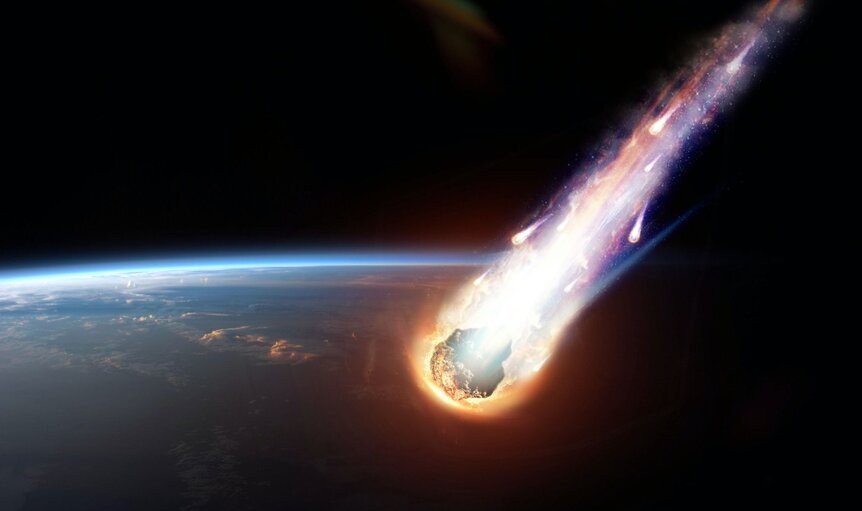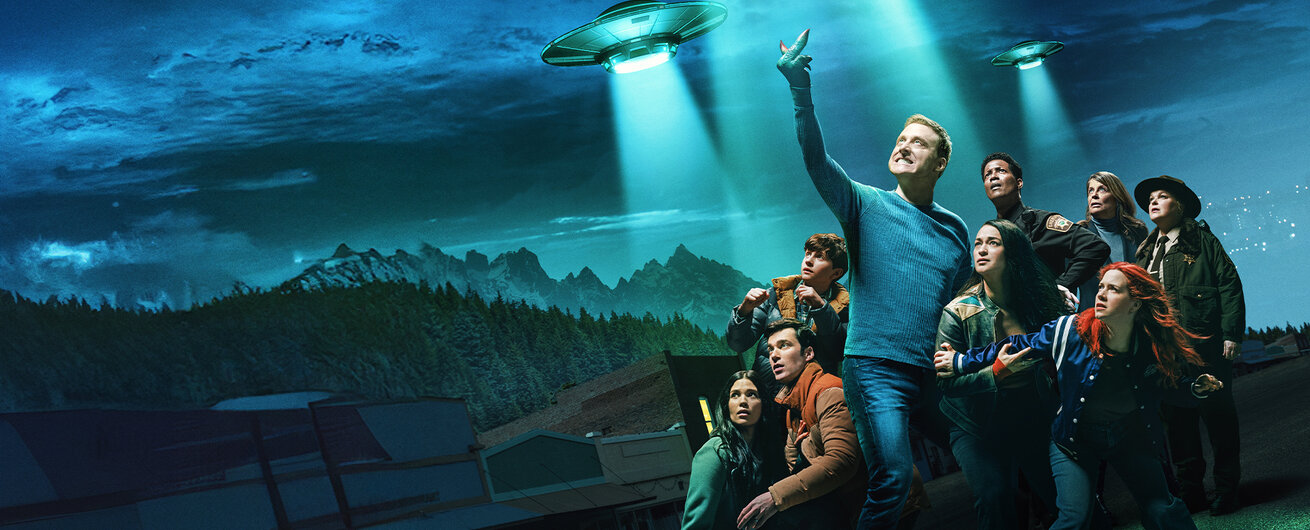Create a free profile to get unlimited access to exclusive videos, sweepstakes, and more!
Whatever Happened with Those Alien Spherules from the Bottom of the Ocean?
Inquiring scientists want to know what happened with Avi Loeb's UFOs in the Pacific?
SYFY’s Resident Alien (streaming now on Peacock!) begins with Alan Tudyk's Harry Vanderspeigle (real name unpronounceable) crash-landing in Colorado. At least he didn’t end up at the bottom of the ocean. That’s what might have happened to another extraterrestrial visitor, according to Harvard physicist Avi Loeb.
A few weeks back, Loeb made headlines when he announced the potential discovery of alien artifacts dredged from the bottom of the Pacific. The announcement sparked excitement among alien enthusiasts and skepticism from other quarters of the scientific community.
The (Possibly Interstellar) Meteor IM1
In 2014 a meteorite smashed into the Earth about 85 kilometers off the coast of Manus Island in Papua New Guinea. The impact was catalogued by NASA’s Center for Near Earth Object Studies (CNEOS) but otherwise the only splash it made was into the Pacific.
RELATED: Harvard Astronomer Hunting for UFOs on the Ocean Floor May Have Found... Something
Then Loeb got his hands on the data and, along with then-student Amir Siraj, authored a paper suggesting that the meteor then known as USG 20140108 was actually interstellar. Based on its observed speed and trajectory, Loeb and Siraj calculated that it must have come from beyond the solar system. They also proposed the new name of IM1, denoting the object’s interstellar origin.
Loeb also suggested, based on the force of impact, that IM1 must have been made of stronger material than any other tracked or recovered meteorite. He wrote in a recent Medium post, “IM1 was moving outside the solar system faster than 95% of all stars in the vicinity of the Sun. The possibility that IM1’s excess speed benefited from propulsion and the fact that it was tougher than all known space rocks, raise the possibility that it may have been technological in origin.”
There was some initial skepticism from the scientific community (much of which remains), but Loeb’s interstellar origin hypothesis for IM1 was apparently later confirmed by the United States Department of Defense in an official letter. It reads, in part, “Dr. Joel Mozer, the Chief Scientist of Space Operations Command, the United States Space Force service component of the U.S. Space Command, reviewed analysis of additional data available to the Department of Defense related to this finding. Dr. Mozer confirmed that the velocity estimate reported to NASA is sufficiently accurate to indicate an interstellar trajectory.”
Hunting for Crashed Alien Technology in the Pacific Ocean
Giving credit where it’s due, Loeb has committed to his hypothesis, spinning up a $1.5 million expedition to scour the Pacific seafloor in search of fragments from IM1. If pieces are found and confirmed to be interstellar, it would provide an opportunity to look at a distant part of the cosmos up close. That’s probably enough to make scraping the ocean for fragments worthwhile, but Loeb has a not-so-secret motive. He’s hoping to find aliens, or at least their shattered tech.
Loeb and a team spent several weeks aboard a ship called the Silver Star, using a custom-built magnetic sled to snatch microscopic pieces of metal from the ocean floor, and their plan worked. They found a total of 50 sub-millimeter metal spheres concentrated along the expected impact path.
The team performed initial analysis of the spherules aboard the ship, the results of which Loeb shared online. “Based on the measured abundance of U238, Pb206, U235 and Pb207, I calculated that the two spherules from the meteor path (derived from Run 8 and Run 19) have an age of order the age of the universe (14 billion years) whereas the background spherule (found in Run 17 outside the DoD localization box) has an age of order the age of the solar system (a few billion years),” Loeb said via Medium.
Loeb’s Scientific Peers Aren’t Convinced
Paradigm-changing scientific discoveries often come on the other end of a dramatic claim. Evolution, the Big Bang, Climate Change, Germ Theory and so many other critical scientific discoveries were initially met with pushback and skepticism. That Loeb is suggesting the existence of alien technology may be the latest in a long line of seemingly ridiculous statements from scientists that later turn out to be true. That remains to be seen. The problem with Loeb’s work as of late is that it skirts the existing research pipeline, making dramatic claims to the public which have not been peer reviewed.
Loeb is a well-known career scientist from a well-respected institution. He probably has an obligation to tread a little more carefully. “People are sick of hearing about Avi Loeb’s wild claims. It’s polluting good science — conflating the good science we do with this ridiculous sensationalism and sucking all the oxygen out of the room,” said Steve Desch, an astrophysicist at Arizona State University, to the New York Times.
In addition to questioning Loeb's alien hypothesis, some scientists are also calling into question the interstellar nature of IM1, upon which so much of this hinges.
It’s unclear what data the DoD used or how accurate their calculations are, because they were based on information available to the DoD and no one else. Most folks see that it came from the DoD, an official source, and that’s enough. But that’s not how science works, we don’t appeal to authority without seeing the evidence.
That’s especially true because there are well-understood error bars placed on these sorts of trajectory and velocity calculations. The bottom line is it’s possible IM1 isn’t even interstellar, let alone alien.
A recent paper from Peter Brown and Jiri Brovicka from the University of Western Ontario and the Astronomical Institute of the Czech Academy of Sciences respectively, reviewed the data from USG 20140108 and found significant uncertainties. Their review offers two potential explanations for the impact observed on January 8, 2014.
Either the meteorite was travelling at high speeds and had record-smashing material strength, as Loeb has suggested, or the entry speed was overestimated. One of those conclusions requires the existence of heretofore unseen materials and, possibly, intelligent extraterrestrials. The other requires that we mucked up the math. Of course, we’ll all be able to decide collectively when and if the data is presented and peer reviewed, as it should be.
In the meantime, you can absolutely find aliens on Resident Alien, streaming now on Peacock!




































